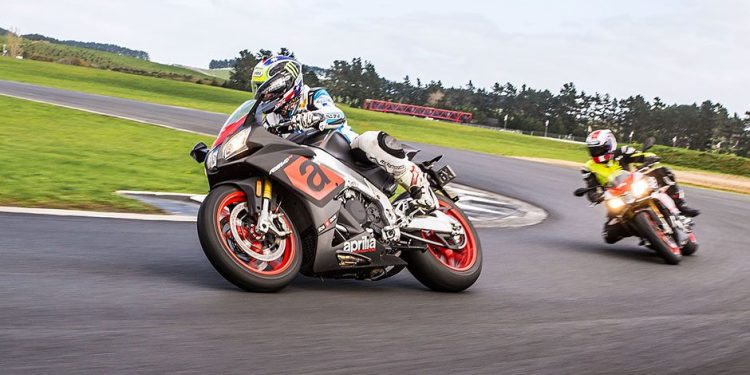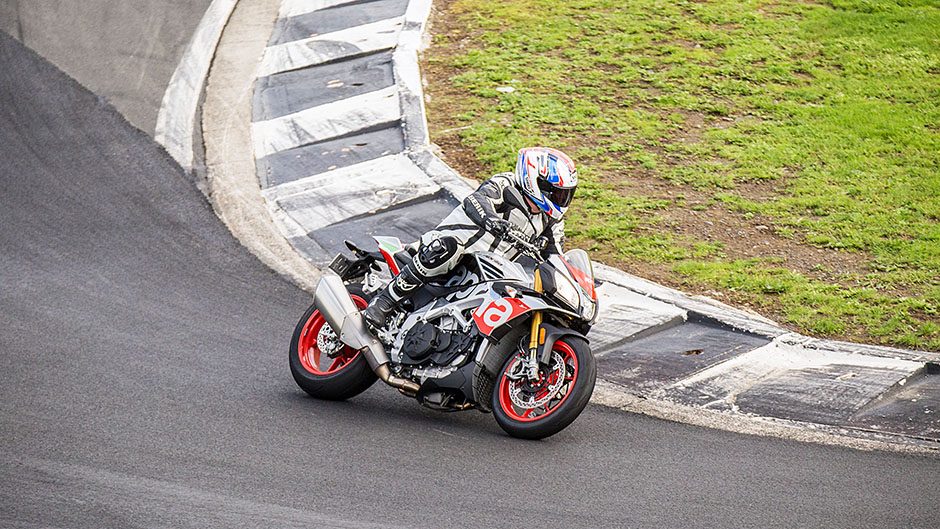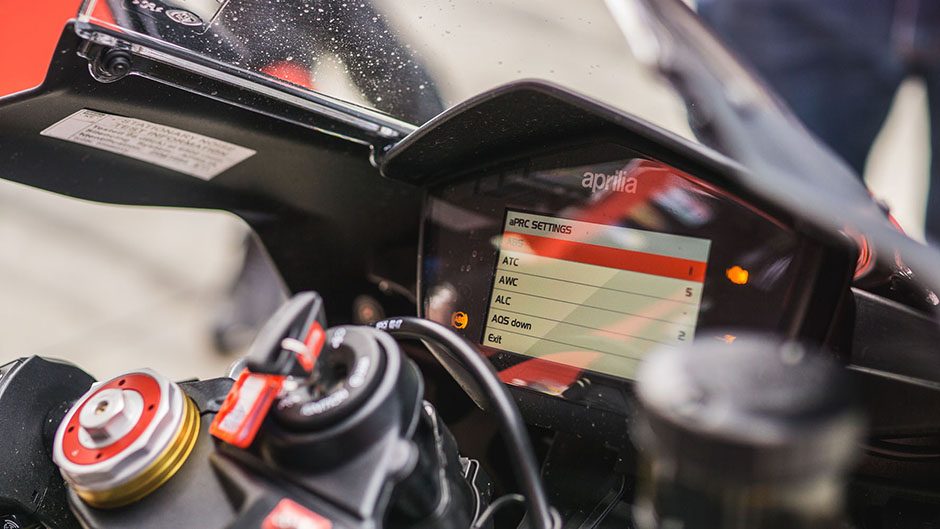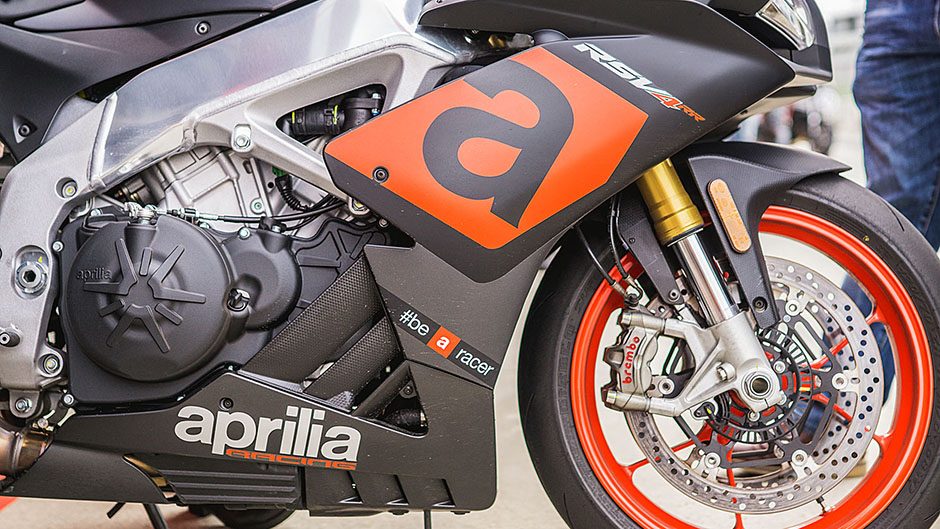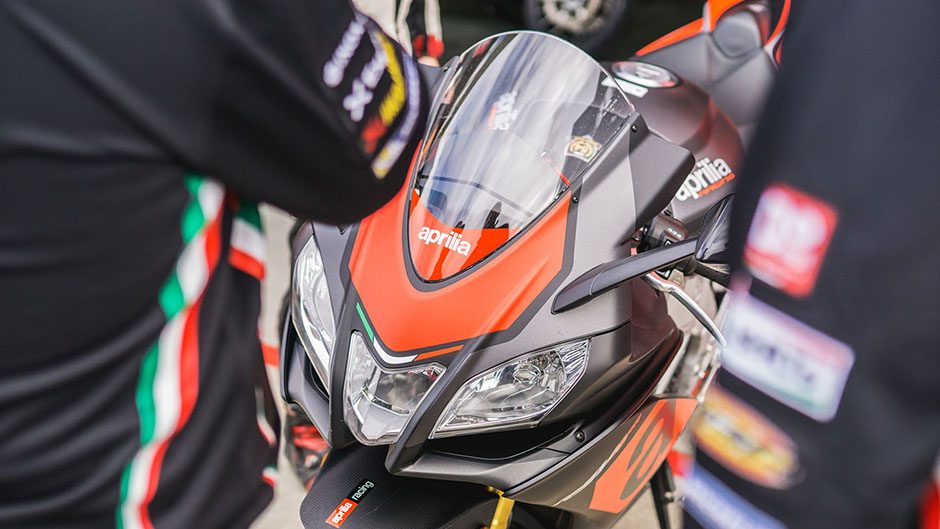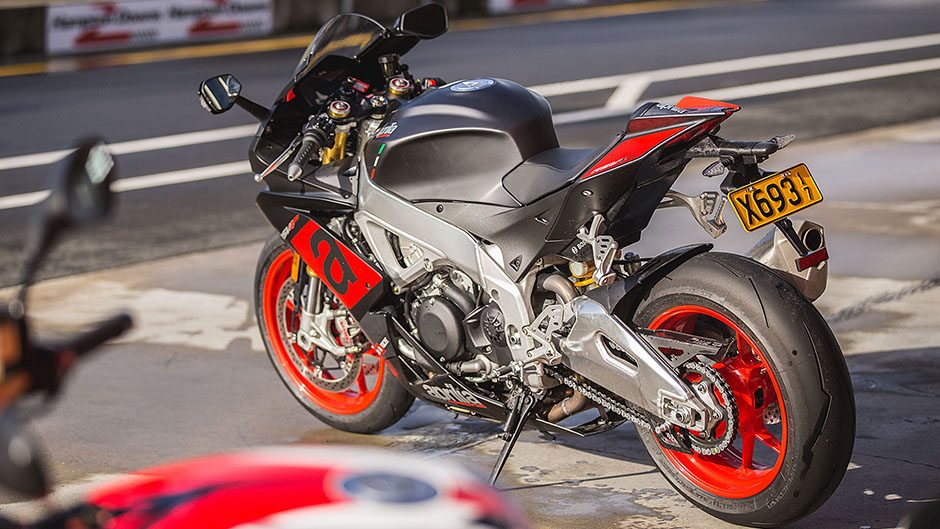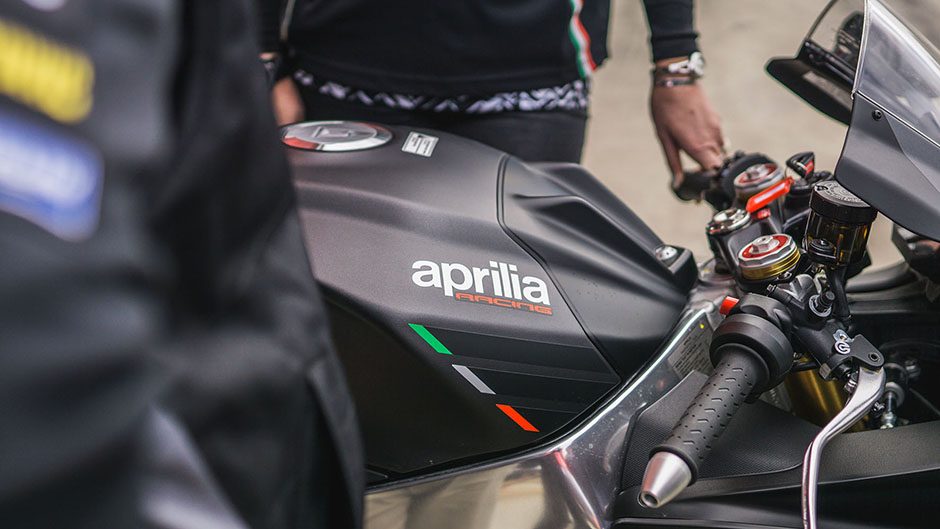2017 Aprilia RSV4 and Tuono V4 launch report
Words Peter Louisson | Photos Jason Haselden/BRM
With 200 horses just itching to cause havoc, a track setting is the best way to experience a superbike. We ride Aprilia’s top sports machine, the RSV4, and its supernaked Tuono sib at Hampton Downs.
It wasn’t just the latest iterations of the BMW superbikes we were invited to ride at Hampton Downs recently but the direct Italian competition from Aprilia as well. The distributors of both brands had thoughtfully provided us with an RSV4 and Tuono V4 for comparison purposes. We rode these first up in the morning, when the rain had stopped but the track was still drenched.
Unluckily we’re first up on track and riding the RSV4, a bike I’d not experienced before. On the upside only a handful of other bikes are out there circulating with me. As detailed in the July issue, for 2017 the Aprilias get minor chassis tweaks (repositioned engine within the frame), improved suspension and brakes, updated electronics, including cornering ABS, but no more power, despite achieving Euro4 emissions status.
When we say no more power, that’s probably because 201 stallions is about enough for most folk. The quickshifter is now also bidirectional. We’re thinking about self control and self preservation mainly, for the track is sopping. Fortunately modern superbikes have plenty of safety checks and balances, potentially saving you from yourself. There’s the ‘Wet’ engine mode setting – check – and eight levels of traction control, should sensors detect imminent slip at the rear wheel. Throughout the 15min session we have a few slips and slides under brakes briefly but no real heart-in-throat moments.
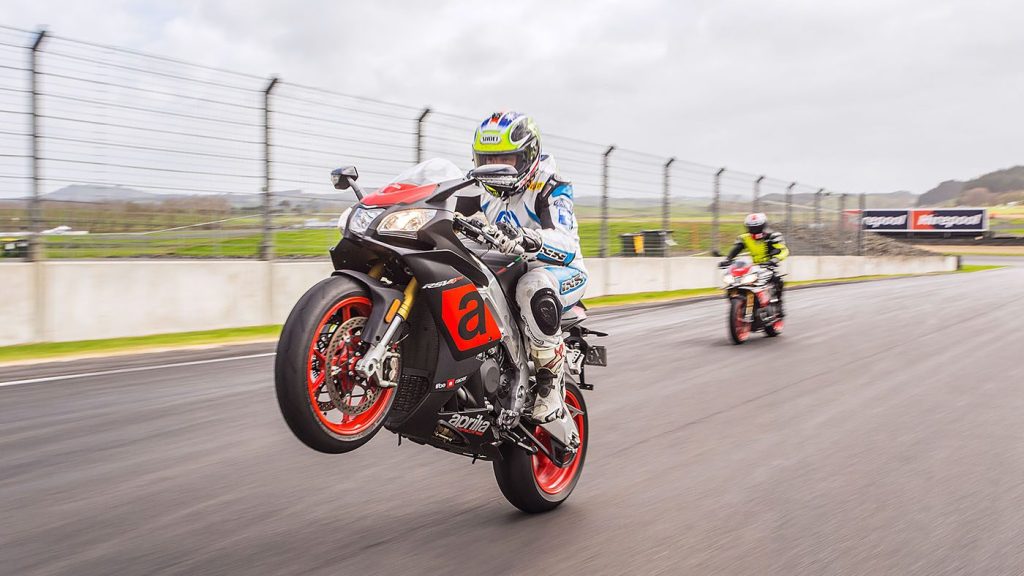
It’s disappointing to peer down at the high-res screen and note that the top speed for the session is only 160 before braking into turn one when we’ve hit close to 250km/h on a dry track in the past. Still, the bike and I are intact, but to be frank riding the RSV4 on a wet track is essentially an exercise in futility. Sure you get your eye in, but you feel like a contestant in Fear Factor. The bidirectional quickshifter is cool though, so long as you remember to bang it down when shifting from second to first in the hairpin turns.
We ended up coasting in neutral twice, but I’m pretty sure that was a mix of unfamiliarity and user error. Epic is the only way to describe the noises this makes, and we’re not even in Track mode so engine power is pegged back slightly in the first couple of gears. You can understand why folk buy V4s for the mechanical music they create; think a more refined V-twin and you’re still not really close.
The riding position is a bit more race-oriented than that of the S 1000 RR, and I’m reminded of an old neck injury after a few laps at not-so-fast pace on the Aprilia. Soon enough, dry lines begin to appear on track. By session three the circuit has dried entirely, though a blustery wind from the southwest is hampering progress up the start-finish straight so we weren’t expecting any speed records to fall.
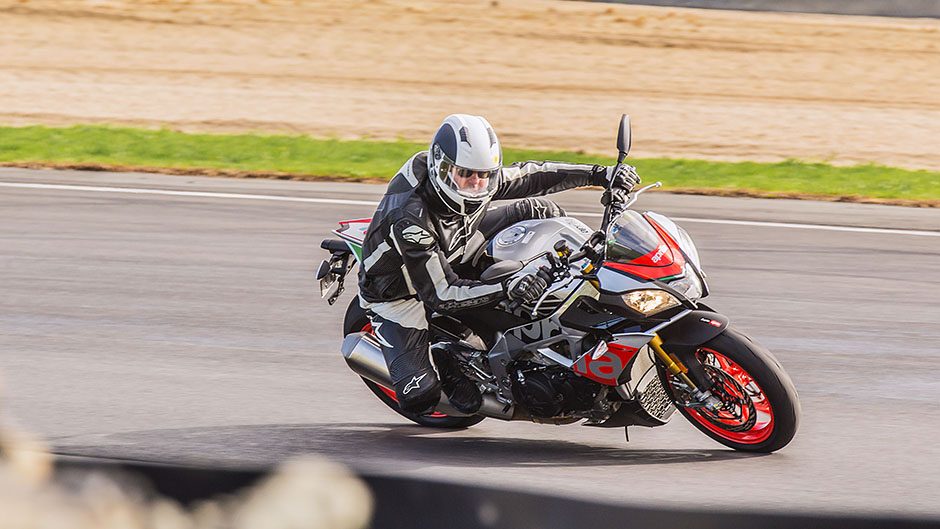
But now we can relax some as grip is no longer the issue it was and the big Aprilias can stretch their legs. Compared with the BMWs we also rode on the same day, there’s something more aesthetically pleasing about the Aprilias – the asymmetry of the S 1000 RR lights isn’t for everyone – but of equal or greater importance the V4 sings and soars on track where the BMWs howl. Some prefer the IL4 sound, others the V4 lilt. Each to their own, but it is an important aspect. You speak to most Harley riders and they’re attracted to the brand not because of the ride or handling so much but the noise and image. Harley even attempted to patent the former in the day but Ducati was having none of that.
After a bit of time to calm the old ticker, we’re back out on the RSV4 again, and we can add a bit more speed to straights – we’re up over 200 at the top of third gear on the short straight between the downhill turn five and the never-ending sweeper that is turn six, leading onto the start finish straight. We’re now working the monobloc brakes to the limit on their lowest ABS race setting – ABS intervention arrives later in the piece – and they just suck it up. The lever is adjustable for reach, and is just about right on its lowest setting; everyone else has it right out.
It’s long legged this bike; for much of the track we’re in first or second, hitting the top of third on the short straight and into fourth up the hill. You forget just how much speed superbikes are capable of in the lower gears. Most will hit 160 in first gear, which makes sense given cars can do 80km/h in first and bikes rev twice as high. Again the neck’s giving me gyp and I realise that this bike is really just a bit too small and compact for my creaky 183cm frame. My feet are up a bit high, and so occasional hip cramps set in. Crashes may hurt but aging is also a painful process!
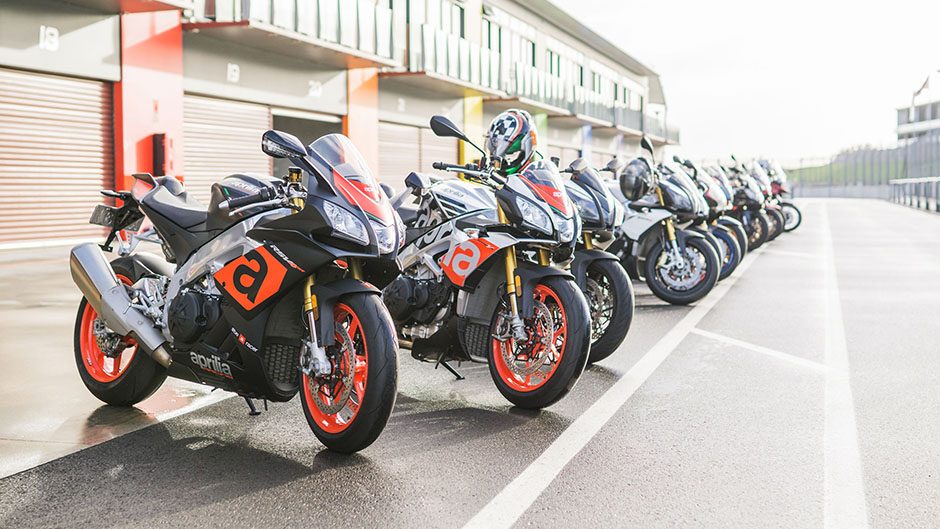
Next up, a ride on the riotous Tuono V4. I always feel a bit more at ease on this type of machine. It’s not such a stretch to the bars and the bike’s easier to move around on, plus there’s extra bar leverage. On the downside you’re not putting quite so much weight over the front wheel so despite being down on power by 25 horses it tries to wheelie more when you pour on the power out of the first-gear downhill turn four.
And it feels all but as quick on track as the superbike, again pulling to 200km/h on the short straight and we’re not even in the highest power Track setting. The Aprilias don’t have the electronically controlled suspension of the S 1000 RR so they feel a bit firmer, more like a proper race bike, but they also don’t move around as much at speed so don’t require the constant little line corrections of the BMWs.
Like the RSV4, the Tuono has fantastic brakes, and the engine noise also is terrific. Because it has slightly less power we kept running into the 11,500rpm engine limiter a bit more. Shouldn’t have really as blinking lights suggest when to upshift. Again, no clutch is necessary up or down the box which is just one less thing you need to think about on track.
So which did we prefer? Overall, the BMWs. There’s something about them that seems to put you more quickly at ease, and it has been this way right since the bikes first broke cover back in the noughties. They’re a touch more comfortable too, both in riding position and suspension settings, if not quite as stable as the Aprilia on track. For cornering precision, acceleration and braking prowess, they’re harder to separate. But if its noise or aesthetics that’s your bag, the Aprilias take that out.


